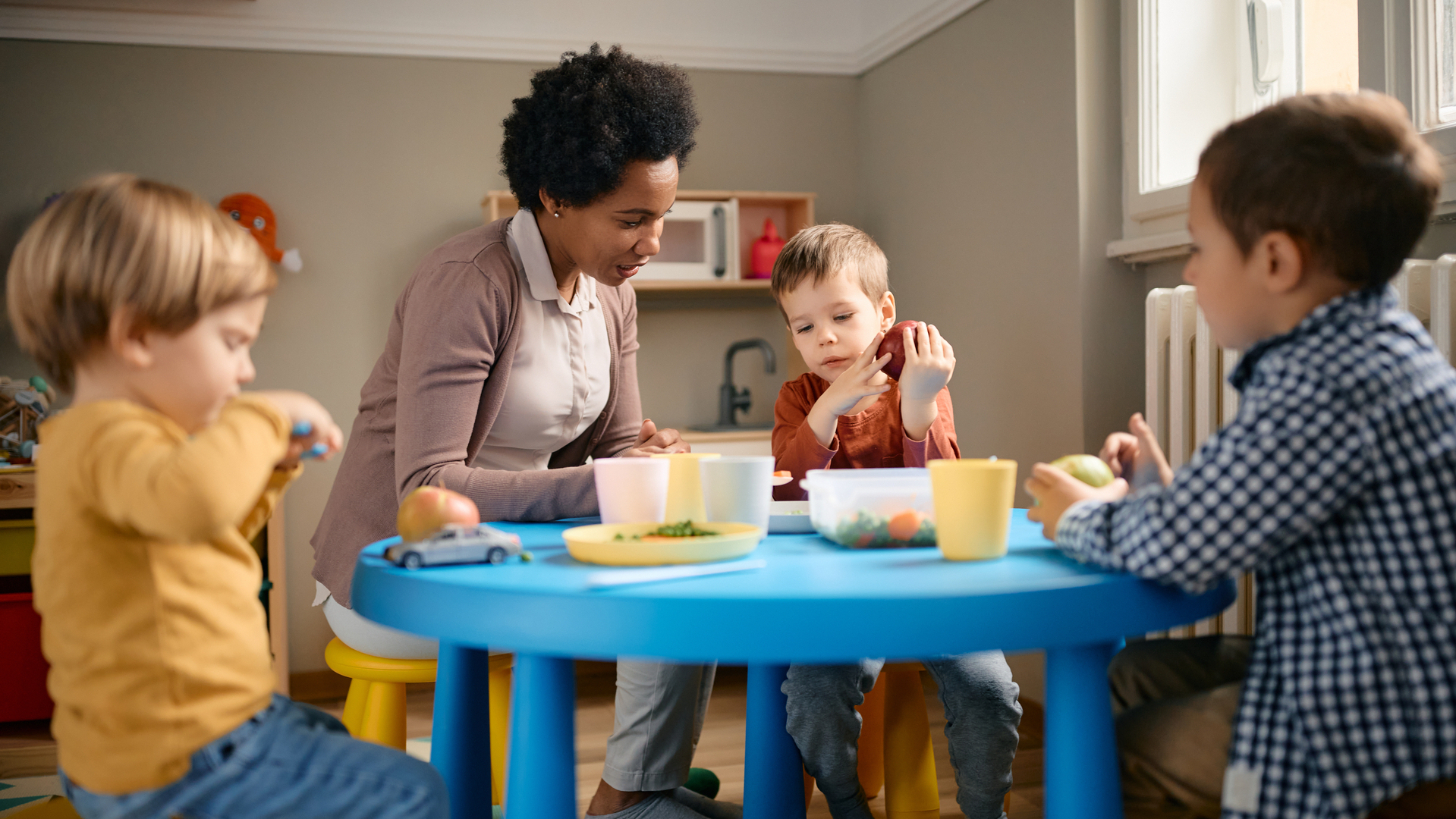The Power of Role Modelling
- Written by: Alexis Webster and Lynne Lafave

Children are constantly watching, listening, and learning. They are listening when adults in their lives communicate values through the words and the ideas they speak. AND they are also paying attention to those adults in the moments between.
Mealtimes are a great time to role model and help children in their learning journey.
Positive role modelling can look like eating nutritious food, engaging in physical activity, along with speaking positively about food and exercise. Positive role modelling plays an important role in reinforcing consistent healthy messaging for teaching children healthy habits.1 Keeping in mind that giving inconsistent messaging through words or actions may be confusing for children. Whether or not it is intentional, what caregivers do and say shape how children understand healthy habits.1
Children learn how and what to eat from watching their caregivers. The eating habits caregivers role model can influence children’s habits throughout their life.2 Sit with children and enjoy eating together, meal and snack times are great occasions to role model healthy eating as well as other various skills!3
Be a Positive Role Model During Meal Time
'Role model' healthy eating and positive attitudes toward food to support children’s development of a positive relationship with food. Consider the following tips:
- Eat a variety of new and nutritious foods with children
- Put away distracting toys, phones, and other devices to help children focus on identifying their hunger and satiation cues
- Engage in conversations about traditions and culture
- Be aware of how you talk about food around children. Stay positive and avoid discussing personal dislikes for certain foods.1,2
Build Autonomy and Independence Skills
Mealtimes are a great time to role model and help children in their learning journey.4 Positive meal and snack times promote:
- Social connections4
- Meal time conversations encourage new vocabulary and language skills
- Learning4
- Chance to practice language and social skills
- Learn about different aspects of the food such as colours, shapes, temperature, counting, etc.
- Build a healthy relationship with food
- Physical competencies5
- Fine motor skill development - eating with utensils and self-service
- Gross motor skill development - Passing dishes to meal time companions
References
-
Ontario Dietitians in Public Health. (n.d). Paint your plate toolkit: A toolkit for Ontario child care providers. Retrieved June 16, 2022, from http://cheers.fyi/ODPH-paintplate
-
Alberta Health Services. (n.d.). Healthy eating for young children. Retrieved June 16, 2022, from http://cheers.fyi/HeSH-learnbywatching
-
Raising Our Healthy Kids. (2016). Role Model Healthy Eating [Video]. Vimeo. http://cheers.fyi/RoHK-HEmodel
-
Alberta Health Services. Support Positive Mealtimes [Internet]. Alberta Health Services. 2020. Available from: https://www.albertahealthservices.ca/nutrition/Page17264.aspx
-
Perez, K., Biediger-Friedman, L., Hamilton, M., & Ahrens, J. (2019). P146 Fine Motor Development Through Mealtime Lessons in Head Start Classroom. Journal of Nutrition Education and Behavior, 51(7), S98.